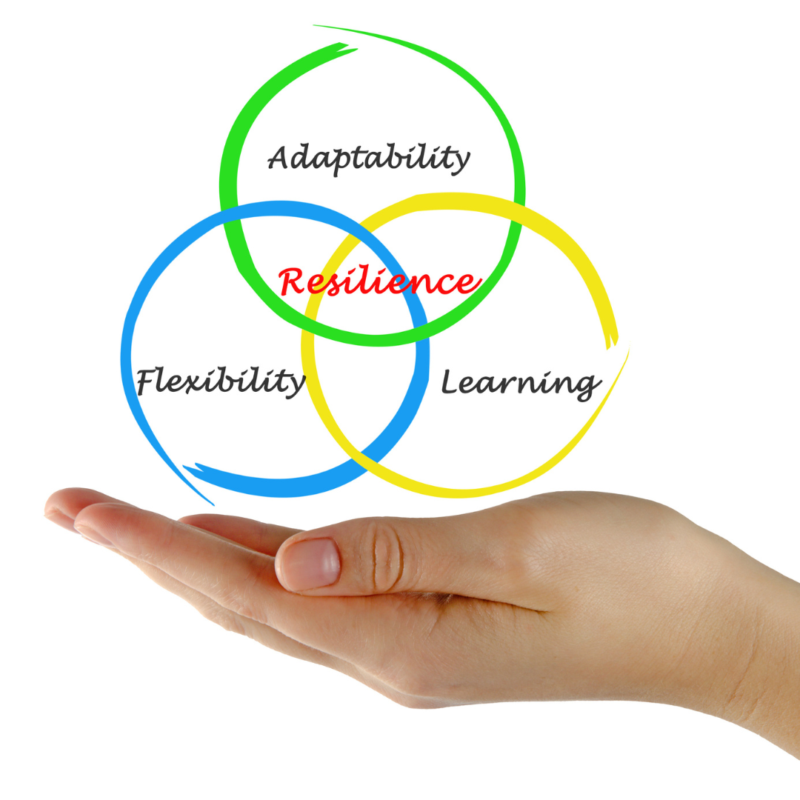Beyond Traditional Hiring: Unlocking Innovation Through Transferable Skills
The job market is tighter than ever, but competition varies across industries, sectors, and roles. Some areas are experiencing critical skills shortages, while others remain highly competitive. However, businesses can no longer afford to rely on outdated hiring practices that exclude exceptional talent simply because their experience does not fit a predefined mould. AI-driven CV screening and traditional recruitment models tend to favour candidates who have worked in identical roles within the same industry. While this approach offers familiarity, it also risks overlooking highly capable individuals with transferable skills—candidates who could bring fresh perspectives, challenge established thinking and drive real innovation.
Through years of consulting across commercial, not-for-profit, and government sectors, I have seen first-hand how solutions that revolutionised one industry have delivered extraordinary results in another. Cross-industry learning has been pivotal in driving efficiency, solving complex challenges, and unlocking new opportunities. Yet, too often, businesses overlook this potential, dismissing outstanding candidates simply because they do not match traditional hiring expectations. In a fluctuating job market, the perfect candidate may not always come from the most obvious place. There may be a hidden gem—undervalued and unmined—simply because their career path does not follow the expected trajectory.
To remain competitive, organisations must rethink how they identify and develop leaders. Instead of prioritising sector-specific experience, they should focus on individuals with adaptability, problem-solving expertise, and a track record of delivering meaningful impact. With a well-structured induction programme and a targeted approach to bridging training gaps, these individuals can quickly gain industry-specific knowledge while bringing in valuable new perspectives that can take the business forward.
The following is a summary of the key learnings that underpin this approach and how organisations can apply them to attract, integrate, and develop top talent from diverse backgrounds.
Rethinking Experience: A Competitive Edge in a Tight Labour Market
The days of relying solely on sector-specific experience are over. In a tight labour market, businesses that confine hiring to candidates with identical industry backgrounds unnecessarily shrink their talent pool. This approach limits access to high-potential candidates and risks stagnation, as companies miss the opportunity to introduce fresh perspectives and innovative problem-solving approaches from other industries.
Professionals transitioning from one sector to another often bring unique insights that challenge conventional thinking. Their ability to adapt, learn quickly, and apply best practices from one industry to another can create significant competitive advantages. This effect is particularly pronounced in mid to senior-level roles, where strategic thinking and leadership often outweigh technical expertise in a single industry.
Cross-Industry Innovation at Different Career Levels
The impact of transferable skills extends across all levels, from hands-on operational roles to boardroom decision-making. Consider how hiring outside the traditional industry scope can drive meaningful change at different levels:
Entry to Mid-Level Roles: Operational Efficiency and Fresh Problem-Solving Approaches
- Retail → Logistics & Supply Chain: A retail assistant moves into supply chain coordination, leveraging frontline customer demand insights to improve inventory forecasting.
- Hospitality → Corporate Client Services: A restaurant manager transitions into a corporate customer success role, applying high-pressure service expertise to improve client engagement in a SaaS company.
- Construction → Project Management: A site supervisor moves into IT project management, using experience in deadline-driven environments to implement agile workflows in software development.
These transitions demonstrate how hands-on experience in one sector can solve operational challenges in another. A retail professional understands stock turnover, making them ideal for supply chain management, while a hospitality manager’s ability to handle demanding customers translates seamlessly into corporate client relations.
Senior Roles: Driving Strategic Change and Innovation
- Aviation → Healthcare Administration: A former airline operations director joins a hospital’s executive team, introducing lean scheduling models from aviation to optimise surgical theatre bookings, reducing patient wait times.
- FMCG → Manufacturing: A marketing director from a global consumer goods company moves into a B2B manufacturing firm, bringing advanced data-driven consumer insights to revamp product positioning and customer engagement.
- Finance → Energy Sector: A senior investment banker transitions into the renewables industry, leveraging financial modelling expertise to improve risk forecasting for large-scale green energy projects.
At senior levels, the ability to think strategically, influence stakeholders, and drive organisational change often matters more than niche technical knowledge. Cross-industry leadership hires frequently apply methodologies already refined elsewhere, allowing companies to bypass years of trial and error.
Executive and Board-Level: Reshaping Industry Norms and Long-Term Vision
- Defence & Aerospace → Technology Startups: A former defence industry executive takes a board position at a cybersecurity startup, introducing robust risk management frameworks to scale operations securely.
- Automotive → Smart Cities & Infrastructure: A former car manufacturing CEO joins a government advisory board on urban mobility, leveraging expertise in automation and electric vehicles to shape transport policies.
- Sports & Entertainment → Corporate Leadership: A former high-performance sports director moves into executive coaching for Fortune 500 firms, bringing elite performance strategies to corporate leadership development.
Businesses seeking leaders with cross-industry experience at the highest levels gain a broader strategic vision. These executives have the foresight to anticipate challenges before they arise and often introduce transformative thinking that shifts industry paradigms.
Why This Matters in a Competitive Labour Market
In industries experiencing a talent shortage, businesses must rethink what makes a candidate valuable. Instead of looking for a perfect industry match, hiring managers should identify candidates with the problem-solving skills, leadership qualities, and adaptability to succeed in new environments.
This shift is particularly vital in sectors struggling with talent gaps, such as:
- Healthcare & Aged Care: Where operational expertise from logistics, aviation, and hospitality can enhance patient flow, scheduling, and customer experience.
- Manufacturing & Construction: Where digital transformation professionals from finance and technology can optimise production processes with automation and AI-driven forecasting.
- Technology & Cybersecurity: Where compliance and risk professionals from banking and defence can enhance governance structures and risk mitigation strategies.
The reality is apparent: the best candidate is not always the one with the most industry-specific experience but the ability to drive the most significant impact. Businesses that fail to recognise this risk losing out on top talent to competitors with a more forward-thinking approach.
By expanding their view of what makes a candidate valuable, companies can fill critical vacancies in a competitive hiring environment and gain a decisive advantage through cross-industry innovation.
Seniority vs. Open-Mindedness: What Matters Most in Leadership?
As businesses face increasing pressure to remain competitive, the debate over hiring criteria for senior leadership roles has become more critical. Should organisations prioritise candidates with deep industry-specific experience or focus on leaders who bring fresh perspectives and adaptability?
The reality is that experience alone does not guarantee success. While sector familiarity can be beneficial, its value diminishes if leaders resist change. In contrast, open-mindedness, strategic agility, and the ability to absorb and apply new ideas are essential qualities that determine whether a leader will drive transformation or maintain the status quo.
In industries struggling with disruption, a leadership team composed solely of long-serving insiders may be unable to challenge ingrained processes. Businesses must, therefore, ask themselves: is hiring from within an industry the safest choice, or could it be the most limiting?
Why Industry Experience Isn’t Enough at the Senior Level
As leadership roles become more strategic, the nature of decision-making shifts. While technical expertise is crucial in junior and mid-level roles, senior leadership is about vision, adaptability, and execution—qualities that transcend industry boundaries.
Consider industries facing rapid transformation:
- Retail & E-Commerce: Companies that exclusively promote long-time retail executives may struggle to pivot towards digital transformation, whereas a leader from the tech sector could introduce an innovation-led strategy.
- Financial Services & Fintech: A senior banking executive steeped in traditional models may resist disruptive technologies, while a leader from a startup culture could accelerate modernisation.
- Healthcare & AI Integration: A hospital executive with decades of experience in traditional care models may be slow to adopt AI-driven diagnostics, whereas an outsider from the technology sector could unlock efficiencies without industry bias.
A leadership team that values continuous learning and diverse thinking will outperform one that relies purely on industry tenure.
The Risks of Insular Thinking at the Executive Level
When a company exclusively hires leaders from within its sector, it risks reinforcing existing problems rather than solving them. Without external influence, organisations can become trapped in cyclical thinking, leading to:
- Resistance to Change – Long-standing leaders may default to “this is how we’ve always done it,” preventing innovative solutions from being considered.
- Lack of Cross-Industry Best Practices – Businesses miss out on proven methodologies from other fields, limiting potential improvements.
- Slow Response to Market Disruptions – Companies that rely on familiar strategies may fail to anticipate external threats, putting them at risk of obsolescence.
A recent study of corporate longevity found that companies that fail to adapt to change typically have leadership teams composed of like-minded individuals with similar career paths. By contrast, businesses that thrive in volatile markets deliberately seek out leaders who challenge assumptions and bring fresh insights.
Building Leadership Teams That Embrace New Ideas
The key to success is not simply hiring external talent but ensuring that existing senior leaders are open to new perspectives. When businesses bring in a leader from another industry, their impact will depend on how well their ideas are received and integrated.
This means fostering a culture where:
- Diverse Thinking is Valued – Leadership meetings should include input from individuals with varied industry backgrounds.
- New Ideas Are Tested, Not Dismissed – Proposals from external hires should be evaluated on merit rather than rejected due to a lack of industry precedent.
- Cross-Sector Learning is Encouraged – Companies should actively study how other industries solve similar challenges and adopt those strategies.
A leadership team that is curious, adaptable, and willing to challenge established norms will create long-term value, regardless of where individual members gained their experience.
The Future of Leadership: Balancing Expertise with Adaptability
The most effective businesses of the future will be those that embrace a hybrid approach to leadership—blending industry knowledge with external expertise. The question is not whether experience or adaptability is more important but how organisations can ensure their leadership teams are equipped to lead in an era of rapid change.
Hiring executives with cross-industry backgrounds should not be considered a risk but a deliberate strategy for resilience and innovation. The key is bringing in new voices and ensuring they are heard.
Ultimately, a business prioritising open-minded leadership over rigid experience requirements will always have the competitive edge.

The Resilience Factor
A diversified supply chain is a business’s most effective risk management strategy. Relying too heavily on a single country—particularly one as politically and economically volatile as the United States—creates vulnerabilities that can quickly become liabilities. The unpredictability of US trade policies and the risk of tariff escalations and economic isolation highlight why businesses must take a more strategic approach to sourcing. A forced review of supply chains due to US trade isolation would ultimately strengthen global business resilience, ensuring greater stability and flexibility in an increasingly uncertain economic landscape.
Resilient supply chains are built on diversification. When businesses source from multiple countries rather than concentrating their imports in one region, they mitigate the risks associated with economic disruptions, political instability, and logistical bottlenecks. The COVID-19 pandemic showed how over-reliance on a single country for essential goods can lead to severe consequences. Many businesses that depended on China for raw materials and manufacturing faced crippling shortages when supply chains were disrupted. Those who had diversified their supplier networks could adjust more quickly and maintain operations with fewer setbacks.
The same principle applies to US imports. If Australian businesses continue to rely disproportionately on American goods, they expose themselves to unnecessary economic risk. A trade war, an unexpected regulatory shift, or political instability in the US could create immediate disruptions. Businesses that have already established alternative supply chains in Europe, Asia, and other markets will be far better positioned to navigate such changes with minimal impact.
Another key factor in supply chain resilience is cost stability. US trade isolation leads to price volatility, with businesses facing sudden cost increases on essential goods due to tariffs and shifting economic policies. Companies that rely exclusively on US imports would be at the mercy of these fluctuations, unable to predict or control their long-term procurement costs. By diversifying suppliers, businesses can take advantage of stable pricing structures in other regions, reducing their exposure to sudden economic shocks.
Technological advancements have made supply chain diversification more accessible than ever. Digital procurement platforms, global logistics networks, and trade agreements such as the Comprehensive and Progressive Agreement for Trans-Pacific Partnership (CPTPP) and the Regional Comprehensive Economic Partnership (RCEP) have made it easier for businesses to identify, vet, and engage with alternative suppliers. Businesses that embrace these opportunities will reduce their dependence on US imports and enhance their long-term competitive advantage.
For small businesses, resilience is particularly critical. Unlike large multinational corporations that can absorb short-term losses and negotiate favourable terms with suppliers, small businesses often operate with tighter margins and less financial flexibility. A sudden price hike or supply chain disruption can have devastating consequences. By proactively seeking alternative suppliers and reducing reliance on US goods, small businesses can insulate themselves from global economic shifts and maintain operational stability.
There is also a strategic advantage in aligning with emerging markets. As the global economy continues evolving, nations such as Vietnam, India, and South Korea rapidly expand their manufacturing and export capabilities. Businesses establishing relationships with these markets early will benefit from lower costs, better trade terms, and a more dynamic supply chain. This forward-thinking approach ensures businesses remain competitive, agile, and prepared for future economic transformations.
The shift away from US dependency is not just a defensive measure but an opportunity to build a more adaptable, cost-effective, and robust supply chain. Companies that take proactive steps to diversify their sourcing strategies will emerge as industry leaders, ready to navigate an increasingly complex global trade environment. The resilience gained through diversification is a safeguard against economic uncertainty and a foundation for long-term success and sustainable growth.

Turning Cross-Industry Hires into Superstars: Induction & Training Gaps Analysis
Hiring senior leaders from outside the industry is only the first step. To fully realise their potential, businesses must ensure these hires integrate effectively, gain the necessary industry knowledge, and apply their expertise in ways that create real impact. Many organisations assume capable leaders will naturally adapt to a new sector, but even the most skilled professionals can struggle without structured support.
A well-planned induction and training gaps analysis can accelerate a new leader’s effectiveness, ensuring they quickly gain the insights they need while retaining the fresh perspective that made them an attractive hire in the first place. Businesses that get this right can turn cross-industry hires into high-impact executives who drive long-term growth and innovation.
Why Cross-Industry Hires Often Struggle
Many businesses invest significant effort in recruiting external talent but fail to provide the right environment for them to succeed. The most common pitfalls include:
- Overloading new hires with industry jargon and internal processes instead of focusing on strategic learning.
- Failing to leverage their external expertise, leading to frustration when new ideas are dismissed in favour of traditional methods.
- Lack of structured knowledge transfer, resulting in a slow and inefficient learning process.
- Resistance from established teams, who may see the hire as an outsider rather than an asset.
Without a structured approach to integration, businesses risk losing high-calibre talent and missing the opportunity for meaningful change. A balanced approach is required to provide industry knowledge while ensuring new hires can apply their skills to drive improvements.
Designing a High-Impact Induction Strategy
A structured induction programme ensures that cross-industry hires gain essential knowledge without losing the ability to think differently. The most effective onboarding plans include the following:
- Customised learning pathways that provide targeted industry primers without overwhelming new hires with unnecessary details.
- Early exposure to key challenges ensures they work on high-impact business problems from the start.
- Reverse knowledge transfer, allowing the new hire to introduce insights from their previous sector while learning from their new environment.
- Strategic training gaps analysis to identify areas where additional learning is needed and ensure training is focused and time-efficient.
- Cultural integration and executive sponsorship, ensuring that the new leader is supported in navigating internal dynamics and gaining influence.
By structuring the induction process carefully, businesses can ensure new leaders quickly gain the confidence and knowledge required to perform at a high level.
Bridging the Knowledge Gap While Retaining Innovation Potential
Many organisations approach cross-industry hires with a rigid mindset, expecting them to adapt entirely to existing working methods. However, the real advantage of hiring outside the industry is the introduction of new ideas and alternative approaches. The goal of onboarding should be to close critical knowledge gaps while allowing the latest leader to challenge conventional thinking.
The best approach is a two-way learning process, where new hires receive the industry insights they need while contributing fresh perspectives. Businesses facilitating this kind of integration create an environment where external hires become true innovators rather than industry adopters.
From New Hire to Industry Leader
A well-designed induction programme is not just about easing the transition—it is a strategic investment in long-term success. New leaders can make a significant impact when businesses provide structured training, executive support, and knowledge-sharing opportunities.
Companies that fail to support external hires often see high turnover and missed opportunities, while those that actively manage the integration process benefit from leaders who bring measurable results. The objective is not to fit a new hire into an outdated mould but to empower them to apply their skills in a way that transforms the business.
A structured induction process ensures that cross-industry hires do not just adapt—they thrive, innovate, and redefine success within their new environment.

Preparing Existing Teams to Welcome Fresh Perspectives
Hiring a candidate with cross-industry experience is only part of the equation. Their success—and the business’s ability to benefit from their expertise—depends largely on how well the existing team embraces and integrates their fresh perspectives. No matter how capable a new leader will struggle to implement meaningful change if their ideas are met with resistance.
In many cases, long-standing employees and leadership teams can hesitate to adopt insights from an external hire, particularly if the individual has not followed a traditional career path within the industry. This resistance often stems from a fear of change, a perception that external knowledge may not be relevant, or concerns about their role within an evolving organisation. Businesses that fail to proactively address this challenge risk missing out on the innovation they sought when hiring from outside the sector.
To ensure a smooth transition and maximise the impact of fresh thinking, organisations must create an environment where new perspectives are accepted and actively welcomed.
Recognising and Overcoming Resistance to Change
Before implementing any strategy to integrate external hires, it is essential to recognise the common barriers preventing teams from embracing new working methods. These include:
- A belief that industry outsiders lack the depth of knowledge needed to succeed.
- Concern that established processes and expertise will be undervalued or replaced.
- Reluctance to change long-standing practices, particularly in stable or highly regulated industries.
- Skepticism towards new ideas that challenge traditional business models or operational methods.
To address these concerns, businesses must adopt a structured approach that ensures new hires and existing teams see the value in each other’s experiences.
Creating a Culture That Values External Insights
A workplace that embraces external expertise does not happen by chance—it requires intentional leadership, communication, and strategy. Businesses can take several steps to prepare teams to engage with new perspectives productively.
- Clearly communicate the purpose of hiring from outside the industry. Employees must understand that the decision was not to undermine existing expertise but to introduce complementary skills and new growth opportunities. Leadership should articulate how fresh perspectives will strengthen the company’s strategic direction and create long-term benefits.
- Position external hires as an asset, not a threat. New leaders should be introduced in a way that highlights their expertise while reinforcing the importance of collaboration. Encouraging open dialogue about their previous experiences can help demystify concerns and create an early connection with the team.
- Foster a knowledge-sharing mindset. Organisations that actively encourage employees to learn from one another will find it easier to integrate cross-industry hires. Structured learning sessions where the new hire shares insights from their previous industry—and, in turn, learns about the nuances of their new field—can help build mutual respect and engagement.
Practical Steps for Smoother Integration
Beyond cultural preparation, businesses should implement tangible processes that ensure fresh perspectives are understood, tested, and incorporated where beneficial.
- Encourage collaborative problem-solving. Assigning new hires to cross-functional teams or project groups ensures they engage directly with existing staff, allowing ideas to flow naturally rather than being imposed. This approach also enables teams to assess and refine new strategies together.
- Leverage structured mentorship or reverse mentorship programmes. Pairing the new hire with an experienced employee fosters an exchange of ideas while ensuring that industry-specific knowledge is transferred efficiently. In cases where the new leader has skills that existing teams may not, a reverse mentorship arrangement—where both parties contribute their expertise—can be highly effective.
- Implement phased change management. New leaders should be encouraged to observe, listen, and gradually introduce ideas rather than immediately restructuring workflows. This approach allows time for trust to build and for employees to see the tangible benefits of new strategies before full implementation.
The Role of Leadership in Fostering an Open-Minded Team
The willingness of a team to accept fresh perspectives is often a reflection of the company’s leadership. Senior executives and department heads play a critical role in setting the tone. Employees are far more likely to follow suit if leadership demonstrates openness to new ideas.
To reinforce this, leaders should:
- Actively engage with the new hire’s ideas and encourage teams to explore their potential.
- Publicly support knowledge exchange initiatives and create visibility around the value external hires bring.
- Monitor the integration process, addressing any resistance proactively before it becomes a barrier to progress.
Maximising the Impact of Fresh Perspectives
When businesses actively prepare their teams to welcome external expertise, they create an environment where innovation is not only possible but inevitable. The goal is to introduce new ideas and establish a framework where fresh thinking and industry experience work together to achieve better outcomes.
Companies can transform cross-industry hires into long-term assets by ensuring structured integration, fostering a collaborative mindset, and reinforcing the value of diverse expertise. The real success of hiring from outside the industry lies in bringing in new talent and creating a business culture that is continuously open to learning, evolving, and leading in its sector.

Competing for Talent in a Changing Job Market
In a tight labour market, businesses that limit themselves to sector-specific hires risk missing out on some of the best talent available. Transferable skills, cross-industry knowledge, and a fresh perspective often provide more value than years of same-sector experience.
The key to success lies in:
- Shifting hiring criteria from strict industry matches to innovation potential.
- Ensuring structured onboarding to bridge industry knowledge gaps.
- Creating a culture of openness where teams welcome new approaches.
Businesses that embrace this mindset will build stronger, more innovative leadership teams, positioning themselves for long-term success.
The real hiring question is no longer “Has this person done this exact job before?” but “How can this person’s skills transform our business?”
Eric Allgood
Eric Allgood is the Managing Director of SBAAS and brings over two decades of experience in corporate guidance, with a focus on governance and risk, crisis management, industrial relations, and sustainability.
He founded SBAAS in 2019 to extend his corporate strategies to small businesses, quickly becoming a vital support. His background in IR, governance and risk management, combined with his crisis management skills, has enabled businesses to navigate challenges effectively.
Eric’s commitment to sustainability shapes his approach to fostering inclusive and ethical practices within organisations. His strategic acumen and dedication to sustainable growth have positioned SBAAS as a leader in supporting small businesses through integrity and resilience.
Qualifications:
- Master of Business Law
- MBA (USA)
- Graduate Certificate of Business Administration
- Graduate Certificate of Training and Development
- Diploma of Psychology (University of Warwickshire)
- Bachelor of Applied Management
Memberships:
- Small Business Association of Australia –
International Think Tank Member and Sponsor - Australian Institute of Company Directors – MAICD
- Institute of Community Directors Australia – ICDA
- Australian Human Resource Institute – CAHRI
-

Business in the Wonderful World of Oz – Workplace Health and Safety – A Comprehensive Guide
$29.95 Add to cart -

Business in the Wonderful World of Oz – Risk Management – A Comprehensive Guide
$29.95 Add to cart -

Business in the Wonderful World of Oz – Property Leasing – A Comprehensive Guide
$29.95 Add to cart -

Business in the Wonderful World of Oz – Intellectual Property Rights – A Comprehensive Guide
$29.95 Add to cart -

Business in the Wonderful World of Oz – Future-Ready: Navigating Change and Seizing Opportunity in Australian Business
$29.95 Add to cart -

Business in the Wonderful World of Oz – Fair Work – A Comprehensive Guide
$29.95 Add to cart -

Business in the Wonderful World of Oz – Export and Global Trade – A Comprehensive Guide
$29.95 Add to cart -

Business in the Wonderful World of Oz – Cyber Security – A Comprehensive Guide
$29.95 Add to cart -

Business in the Wonderful Land of Oz – Australian Consumer Law – A Comprehensive Guide
$29.95 Add to cart -

Business in the Wonderful World of Oz – Crisis Management
$29.95 Add to cart -

Business in the Wonderful World of Oz – The Ultimate Guide
$29.95 Add to cart


